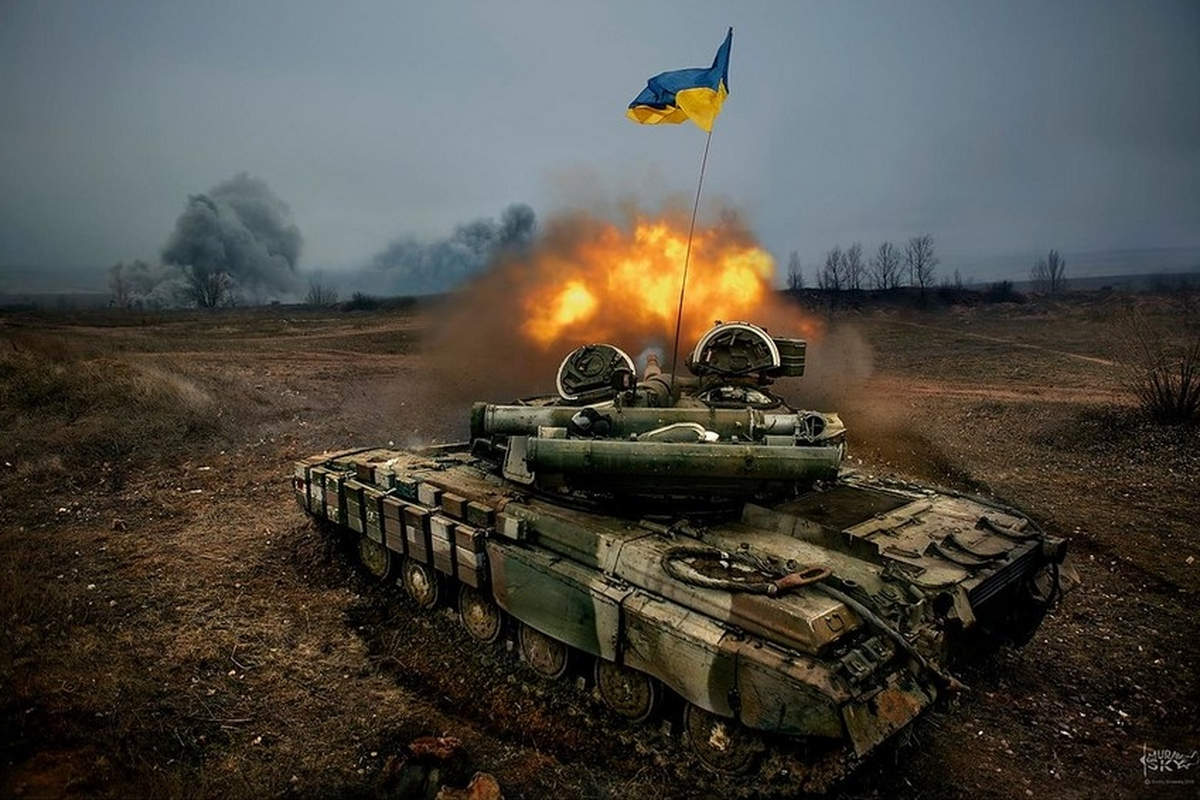Weapons supplied to Kiev to defend itself against the Russian aggressor may end up on the black market to feed terrorist networks. Brussels, Interpol and the Pentagon are concerned about this.
Volodymyr Zelensky keeps asking Western countries for weapons to fight against the Russian invader. And his wishes are granted. Emmanuel Macron, on a visit to Kiev on Thursday, promised six additional Caesar tanks, in addition to the twelve already sent, anti-tank missiles, rifles and many other weapons about which the Élysée prefers to keep the secret.
“Colossal military aid”
The other countries in the Western camp are not left out. Last April, BFMTV drew up a quick (non-exhaustive) inventory of military, defensive and offensive equipment delivered to Ukraine. It shows that Poland sent drones, Javelin anti-tank missile launchers, Grot assault rifles, ammunition, mortars and MANPADS (Man-portable air-defense systems), short-range surface-to-air missiles.
Slovakia sent surface-to-air and anti-tank missiles as well as an S-300 air defence system. Germany has equipped the Ukrainian army with anti-tank weapons, 500 Stinger surface-to-air missiles, 2,700 Strela missiles, as well as machine guns, 100,000 grenades, 2,000 mines, 15 anti-bunker bombs, etc.
Madrid delivered 200 tons of equipment: ammunition, military trucks, special heavy transport vehicles and 10 light vehicles, as well as a dozen aircraft with ammunition and light weapons.
For Norway, a hundred Mistral-type anti-aircraft missiles and some 4,000 M72 anti-tank weapons.
Sweden: 5,000 AT-4 class single-shot rocket launchers, 5,000 additional anti-tank weapons and mine clearance equipment.
Finland: 2,500 assault rifles, 150,000 rounds of ammunition and 1,500 rocket launchers.
Denmark: 2,700 rocket launchers and $88 million for weapons procurement.
Latvia: ammunition, Stinger anti-aircraft missiles and their launch pads, and drones.
Lithuania: Stinger anti-aircraft missiles, mortars, rifles, ammunition.
Estonia: 227.5 million euros in aid, including Javelin anti-tank missile launchers, Howitzer howitzers, anti-tank mines, anti-tank guns and ammunition.
Slovenia: hundreds of Kalashnikovs and ammunition.
And Bulgaria, the Czech Republic, Belgium (5000 automatic rifles and 200 anti-tank weapons), the Netherlands, Italy, Greece, the United Kingdom (thousands of anti-tank missiles), Canada, Japan, Australia, Turkey, etc.
But the biggest contributor to this war is the United States. Stinger anti-aircraft systems, tens of thousands of anti-tank missiles, drones, 7,000 assault rifles, 50 million rounds of ammunition, laser-guided rockets, armor, secure communication systems, etc. And everything else we don’t know! Not to mention direct military assistance.
In total, 44 countries have pledged billions of dollars in military support to Ukraine.
“In a black hole”
Where do these weapons go once they are delivered to Kiev? Who controls them? These questions are beginning to worry the Pentagon. In a well-documented article, Les Crises magazine reports that “The United States has no idea where its military aid will land,” admitting that it could “fall into dangerous hands” and may be fueling one of Europe’s largest pre-war arms trades. Once in Ukraine, “the weapons get lost in the fog of war. They “fall into a big black hole, and you have almost no idea after a short period of time,” a U.S. source told CNN.
There are international agreements on arms sales. But they don’t work. For example, last April, eleven Russian Mi-17 helicopters were sent to Ukraine by the Pentagon. However, the contract stipulated that these aircraft could not be transferred “without the agreement of Russia“!
“Capable of shooting down an airliner”
“The unprecedented influx of weapons raises concerns that some equipment could fall into the hands of Western adversaries or reappear in distant conflicts – in years to come,” U.S. officials lament in a Washington Post article, lamenting “Washington’s ability to keep track of these powerful weapons as they enter one of Europe’s largest trafficking hubs.”
Among the Pentagon’s big concerns are the notorious shoulder-fired Stinger missiles. They are capable of shooting down airliners if they fall into the hands of terrorist groups.
Europeans are aware of the risks of reselling weapons. A diplomat recently told IVERIS that Brussels has “no assurance that the weapons will be followed up. Some of them have already been resold on the black market and are in Bosnia, Kosovo or Albania. This is not surprising given the level of corruption in Ukraine.
Trafficking and corruption
Ukraine has been known as a hub for arms trafficking since the fall of the Soviet Union. In the early 1990s, the Soviet military left behind huge quantities of small arms and light weapons in Ukraine. Without any stock control.
According to the Small Arms Survey, a Geneva-based research organization cited by the Washington Post, some of the 7.1 million small arms stockpiled by the Ukrainian military in 1992 “were diverted to conflict zones” and is concerned about the “risk of leakage [of current weapons] to the local black market.”
Interpol, the Lyon-based international criminal police organization, is also concerned that “the wide availability of weapons from the current conflict will lead to the proliferation of illicit weapons in the post-conflict phase,” according to the Interpol director general.
The Group for Research and Information on Peace and Security (GRIP) recalls that in the 1990s, many Ukrainian weapons found their way into the hands of the Pakistani Taliban, into the Democratic Republic of Congo, and into embargoed countries such as Sierra Leone, Liberia and Croatia. “The ease with which large quantities of weapons were illegally transferred implies that high-ranking officials, both civilian and military, were turning a blind eye or even directly participating in the arms trade.
This is chilling!
Alerte: Selon Pascal Boniface, directeur IRIS, l'aide financière et militaire colossale allouée à l'Ukraine est "déjà détournée par des réseaux mafieux", dans 1 pays "plus corrompu que la Yougoslavie", et où "les armes reçues iraient notamment vers d'autres États" FranceInfo13h18 pic.twitter.com/jQy1TwZEP2
— LM MÉDIA LIBRE Vérif Info (@MediaMontet) May 16, 2022

